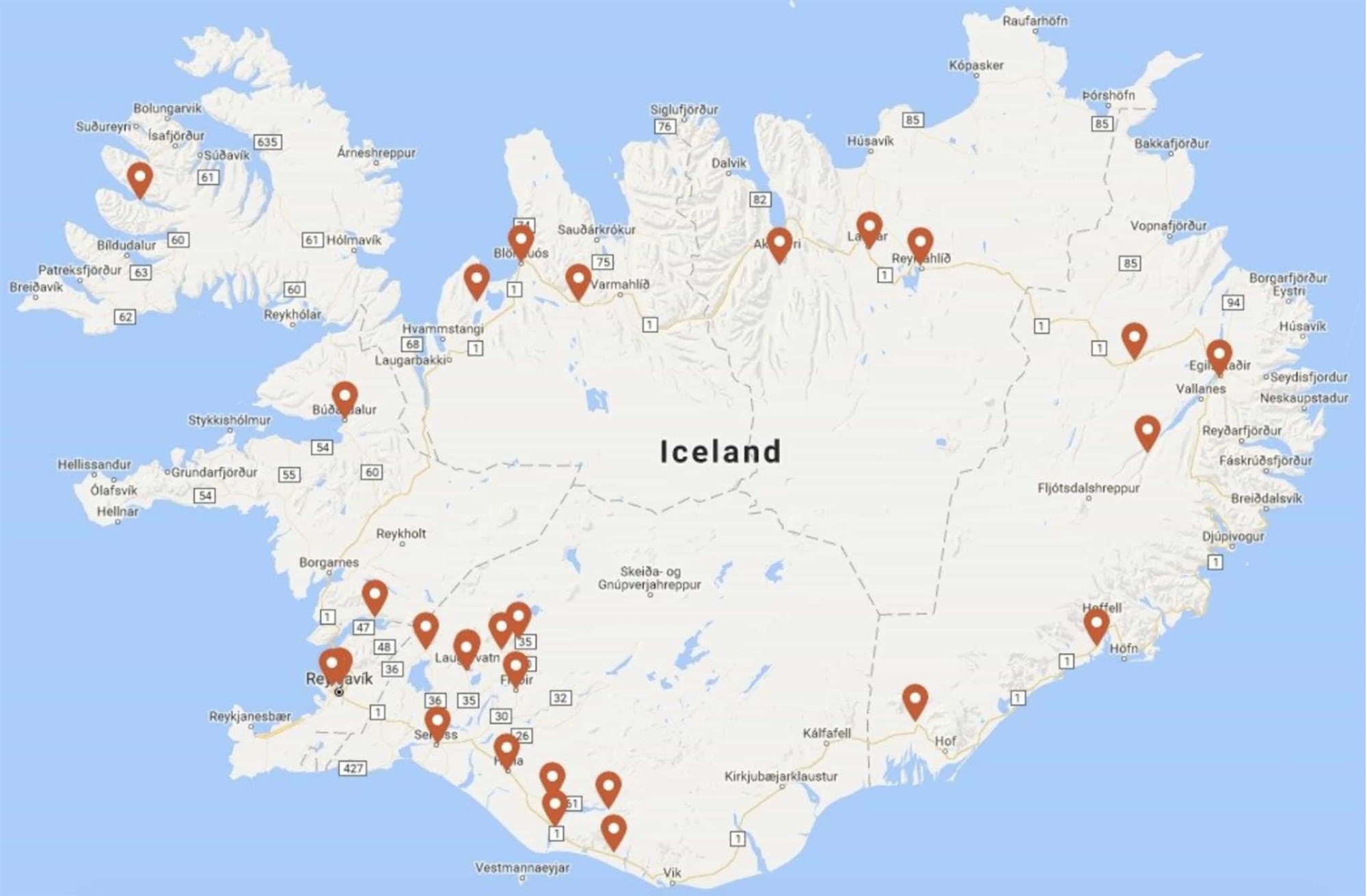21 Fun Facts to Know About Iceland Before You Visit
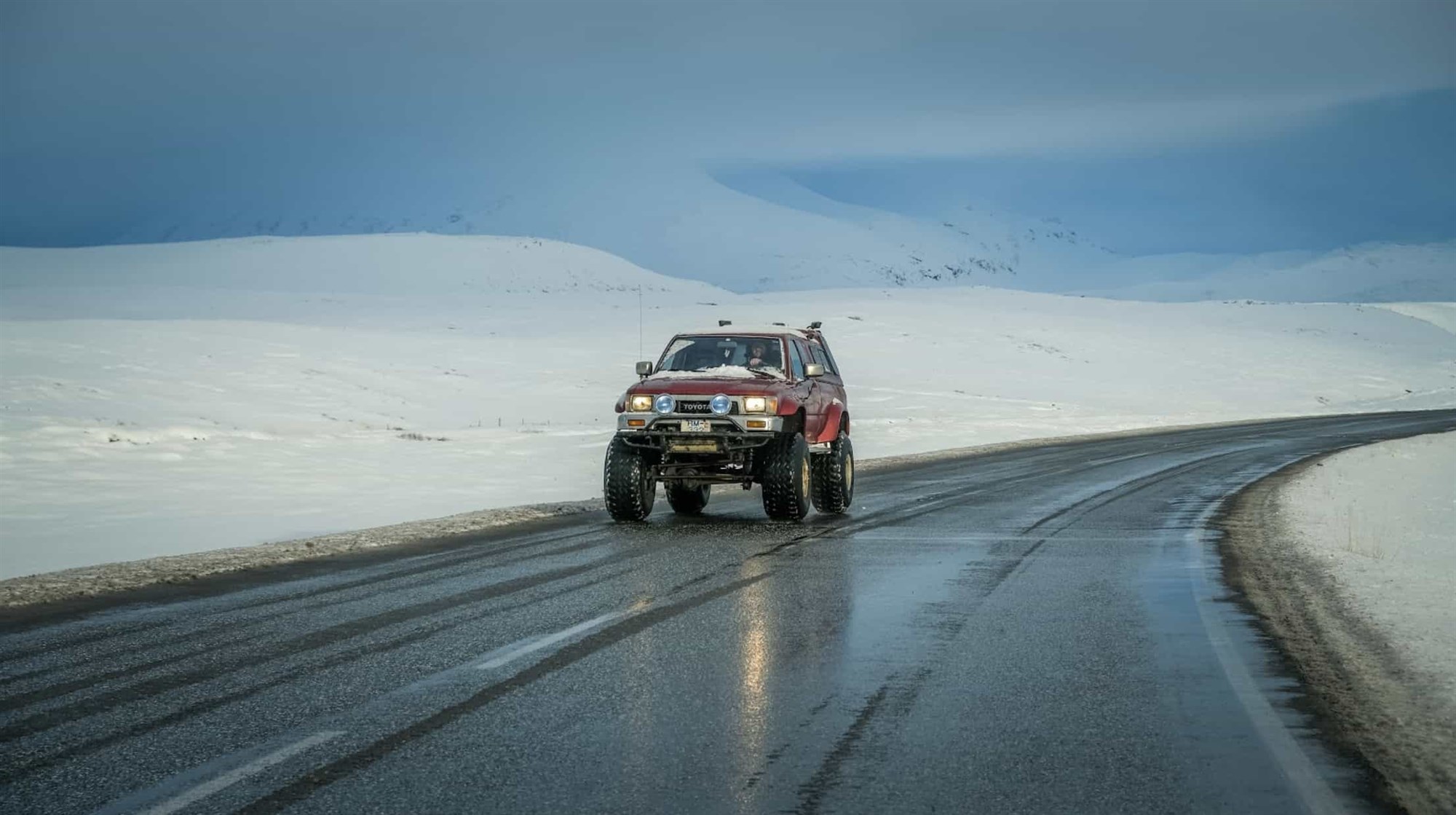
Iceland is Instagram-worthy.
If you want to travel to Iceland, your social feeds are likely filled to the brim with friends, celebrities, and influencers taking trips to the aptly-named “land of Fire and Ice”. Despite the welcoming, ruddy faces of the country’s folk, and how adventure-prone its geography is, Iceland has plenty of twists and turns that go way beyond its rugged roads. These curiosities get into the culture, steep into the people, and take root in our ways. And these 20 weird fun facts will help you realize just how much you didn’t even know you didn’t know about Iceland.
1) There are no forests in Iceland
Iceland is one of those incredible countries with features that you simply won’t find anywhere in the world. One of those things is a lack of forests, but this wasn’t always the case. At the time that Iceland had its first Nordic settlers, scientists have estimated that Iceland had anywhere between 25% to 40% of forested land. Around 800-1125 CE, Vikings razed much of these naturally forested areas. Despite impressive efforts to regrow and reforest the land, Iceland still struggles to restore even a portion of its once-vast forests.
Climate change and eroding soil quality is definitely part of the issue. The other part is that many parts of Iceland’s lava-ridden terrain just don’t have the depth of soil necessary for long-standing vegetation like trees to really take root and thrive. And that’s ironic when you think about the fact that this very same volcanic residue has actually managed to enrich what soil is there. So is there tree development? Yes. But don’t expect to get lost in the woods. You’re more likely to get stuck in a lava-rock cave.
2) GLACIERS COVER ABOUT 11% OF THE COUNTRY
Speaking of unnatural geographical developments, the massive glacier Vatnajökull, the largest glacier in Europe, quietly covers a huge part of the country’s interior. Its cousins, Langjökull, meaning “long glacier” and Öræfajökull are the next biggest. And while these rather mythically-worded names may sound more fitting for dragons than massive sheets of ice, there’s plenty of adventure to be had atop its icy crags. Our favourites include snowmobiling, climbing, and ice cave diving.
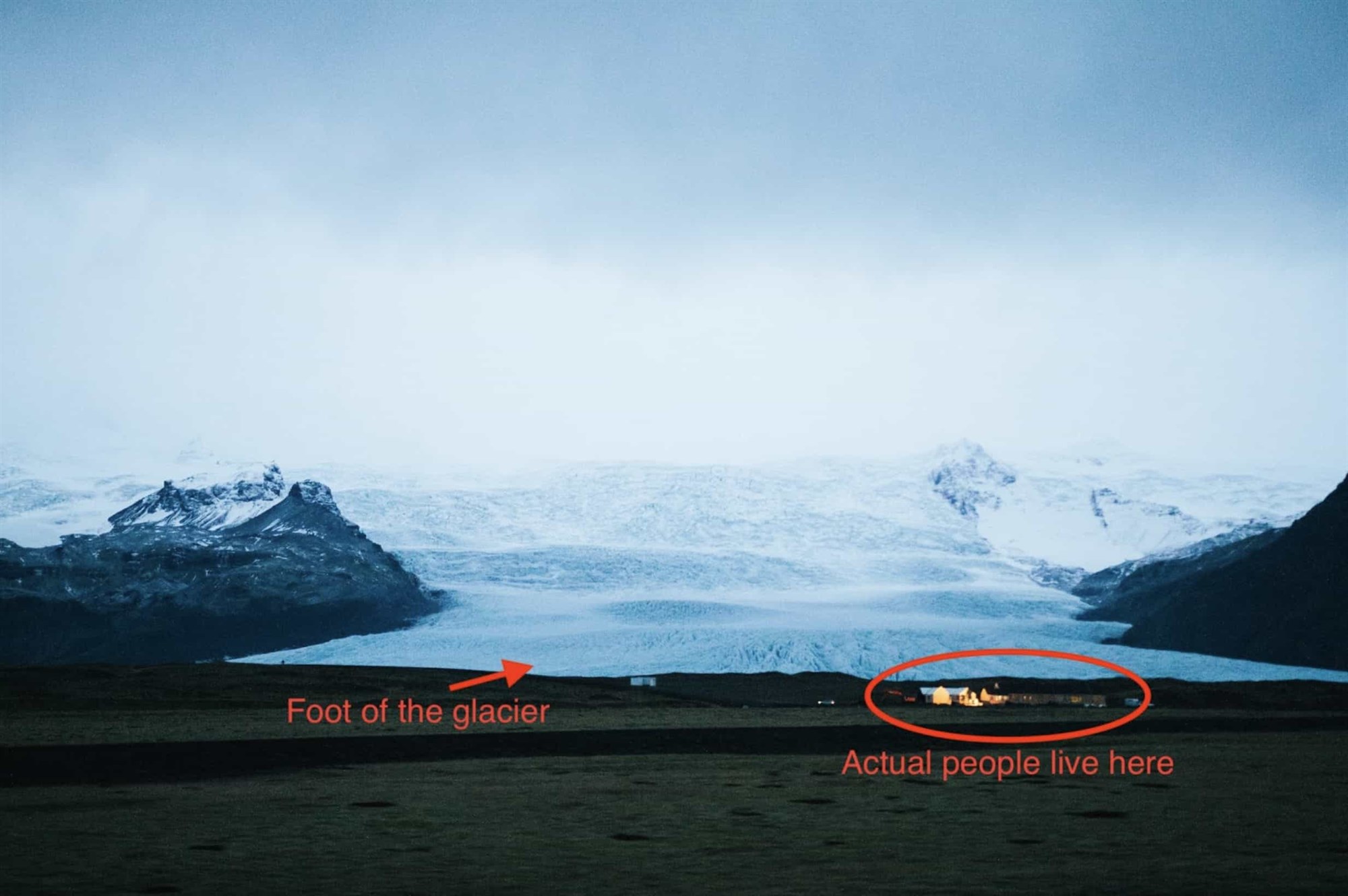
Of course, it’s not the land of fire and ice for nothing. 30% of the country is covered by lava fields! In fact, active volcanoes often sit right underneath these glaciers and, when they erupt, it causes what’s known as a “glacier run.” This is where devastating, fast-flowing rivers form, thanks to hot lava instantly melting the top part of the glacier its hiding under.
3) HIDDEN PEOPLE IN ICELAND
Speaking of mythological creatures, the Icelandic people just so happen to believe in all sorts of fantastical creatures. It’s not quite the Loch Ness monster, but plenty of Icelandic people still believe in the existence of trolls and elves. It’s not just that they believe some of the stories and legends about these creatures — many Icelandic people won’t go through on construction projects if they think the site was once the home of elves. See that massive rock floating on the water? It’s likely to be a frozen troll. Or the mildly sulphuric smell from hot springs? That’s a troll’s dirty bathwater.
4) GENETIC RESEARCH PROJECTS IN ICELAND
For the last 18 years, the genetic research company deCODE has been collecting and analyzing Icelandic genomes. What they’ve found is pretty incredible. The scientists had identified previously unknown gene mutations linked to Alzheimer’s, heart disease and other serious ailments.
Because of its isolated geographical and cultural position, scientists find it easier to similarly isolate faulty genes and identify outliers that may be far more superior or, conversely, could signal a genetic slip-up. Basically, it sets a standard against which other diseased genomes can be studied. Furthermore, in a collection of 100,000 individuals, deCODE was able to discover more than 8,000 people with something known as a “knockout” — which is a special kind of mutation that can completely disable a gene.
5) ICELANDIC FOOD FACTS
Don’t be shocked when you arrive in Iceland, sit down for your first meal and open the menu! Traditional Icelandic cuisine includes interesting delicacies such as:
- Preserved sheep’s head
- Sour ram’s testicles
- Fermented shark’s meat
- Brennevin or “Black Death” which is a schnapps made from fermented potatoes and caraway
- Blood pudding (close to the Scot’s haggis)
- Whale blubber
- Kutmagar, which is fish’s stomach stuffed with its own liver
- Puffin
Many of these exotic dishes are seriously acquired tastes and things that the older generation mostly indulge in. Still, they’re common enough to be found in most grocery stores, so don’t be too surprised.
6) ILLEGAL THINGS IN ICELAND
Every country has its weirdosity-meter directly related to its banned substances. In Singapore, you get charged for dropping gum on the streets. In Iceland, it’s dogs. And before you freak out, no, dogs aren’t banned, per se. But thanks to a 1924 law that did, at one time, prohibit pooches as pets, the current state of affairs is that cats rule the pet landscape. Only if you get a permit and abide by strict laws on microchipping and vaccinating, can Icelandic people own a dog as a pet. It’s also illegal to own or keep snakes, lizards, and turtles as pets.
Then there’s that whole unfortunate thing where beer was associated with the Danish lifestyle. This prompted the country when trying to gain independence from Denmark, to institute a beer ban from 1915 to 1989. That’s almost a hundred years of prohibition!
And, finally, boxing is banned in Iceland. Since 1956, Iceland has been claiming that it could be directly related to an increase in violent crimes. But then you consider that Iceland has the 3rd lowest rate of crime as a country in the world and you wonder if maybe that’s not so crazy after all.
7) ICELAND IS SO SAFE THAT PEOPLE LEAVE BABIES OUTSIDE TO NAP
It’s not child negligence — it’s just the way of the hearty Icelanders! If you’re strolling along and you see a baby napping outside on someone’s property or outside of a cafe while mum and friends chat on the patio, that’s not crazy. That’s just Iceland. And given how low the rates of crime are in Iceland, it’s entirely safe.
8) VOLCANIC ERUPTIONS IN ICELAND
For such a small country — roughly the size of Ohio — Iceland’s ongoing volcanic activity is a real and observable force of nature.
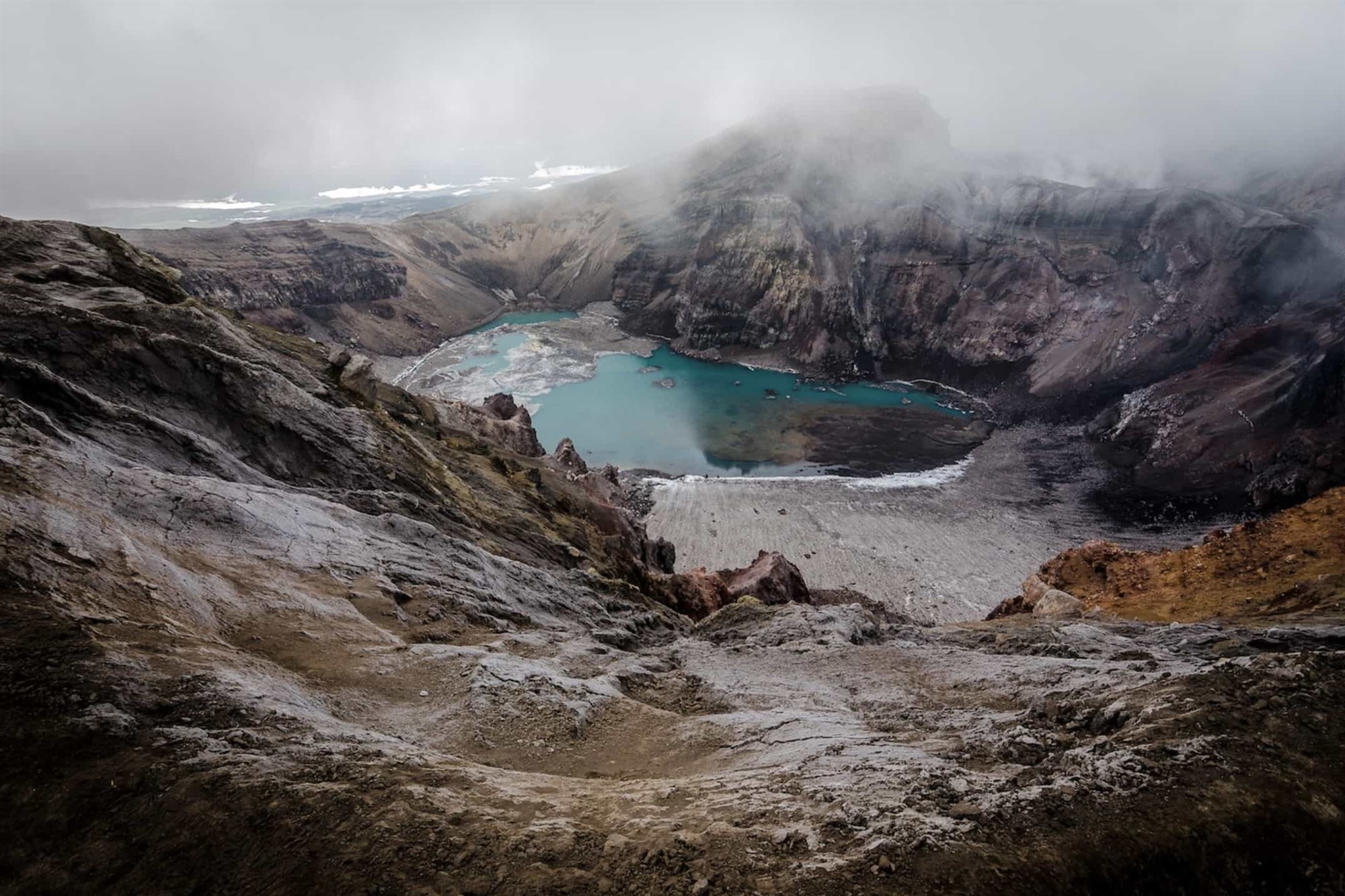
Remember the funkily-named Öræfajökull glacier? Well, it houses the tallest peak in Iceland, Hvannadalshnjúkur. But hiding right underneath is the Öræfajökull volcano, one of its two deadliest. In fact, volcanoes are so rampant around the country that there’s something erupting in Iceland every three to four years. Watch your step!
9) ICELANDIC NAMING COMMITTEE
Iceland has managed to keep its crime rates low, the gene pool robust, and the violence to a bare minimum. They’re doing something right with those bans, right? One could say that Iceland’s fairly peaceful and placid way is why the country, as a whole, can focus on small details. Geopolitics is less of an issue here, but one’s history and culture matter enormously.
And perhaps that’s why it’s no surprise that a detail like naming has a very tight policy around it. First off, non-Icelandic names are banned. This is to preserve the Icelandic language and culture. Any names not previously heard of or used must go to the Icelandic Naming Committee, which can either accept or reject a name put forth by a parent.
Phonebooks are still a thing, and these list native Icelanders by first name and profession — because surnames, such as they are, are not the same throughout families. They basically indicate the name of your parent — Sigrun, for example — with an attached dottir or son to tell others whether you’re they’re daughter or son. So you could technically have multiple women named Sigrunsdottir who are otherwise completely unrelated.
10) LANDSCAPES OF ICELAND
Every place has its thing. If you watch Anthony Bourdain’s Parts Unknown long enough, for example, you’ll be convinced that Thailand is a non-stop night market-fest.
In Iceland, while the food and folk are certainly distinct, it’s the breathtaking landscapes you’ll remember most vividly. Plan to maximize your itinerary for places to see and experience, rather than looking to pack your schedule with things to do. Here, the experience of this wilderness is part of the doing.
11) ICELAND’S ENERGY SOURCES
It’s not just a photo op or a place to leave all your cares behind. The hot springs powered by the country’s natural geothermal activity are actually the source of Iceland’s energy consumption. These facilities — peppered in remote locations around the country — power 25% of the country’s electricity needs and around 85% of primary energy use in Iceland from renewable resources.
12) PACIFISTS BY LAW
Guess how many people have ever been actually shot by a police officer in Iceland? That would be one. Which also happens to be the number of wars the little country has ever waged, ever. And even then, the Þorskastríðið, aka, The Cod War, was because of a dispute between Iceland and the UK over fishing grounds in the 1960s and 70s. Mutually assured destruction never tasted so good.
13) BOOKWORMS BY NATURE
There’s an actual term for this in Iceland: jólabókaflóð, which refers to the Christmas book flood phenomenon. Prior to Christmas, a whole flood of books are printed and published because they’re in such high demand as Christmas presents. In fact, Iceland has the highest number of book-and-mag publishers and at least 10% of the country’s population will publish a book at some point in their lives.
14) ICELAND HAS NO MOSQUITOES
This alone might make you consider moving to Iceland for the summer: The country has no mosquitoes. Yes, that could very well change with the influx of tourism but, for now, the country is entirely mosquito-less. They might as well be banned. In fact, neither Iceland nor the Faroe Islands have mosquitoes — unless you count the one preserved in alcohol at the Icelandic Institute of Natural History, captured by Gisli Mar Gialson in the 1980s in an airplane cabin.
It’s all thanks to the country’s ecology, which goes through three main freezes and thaws each year. This means that a mosquito simply doesn’t have time to develop from larvae into fully invasive and thoroughly irritating adult insect. Along with this, there are no shallow ponds in which mosquitoes can breed. So even if they had time, they’d have no place to safely hatch. Win-win.
15) Icelandic Horses have five gaits
Besides the terrifically sturdy seabird, the Puffin, Icelandic horses are next on most people’s list of must-see native creatures. Unlike countries at the other end of the world — like New Zealand and Australia — somehow creatures are not all that crazy here at the opposite pole. As a fun sidenote, though, the Arctic fox is actually the only mammal native to Iceland.
But the Icelandic horse still claims its own bizarre niche in the country’s phylum. Why? Because regular horses have only three or four paces or gaits at which they run. The Icelandic horse, however, has five.
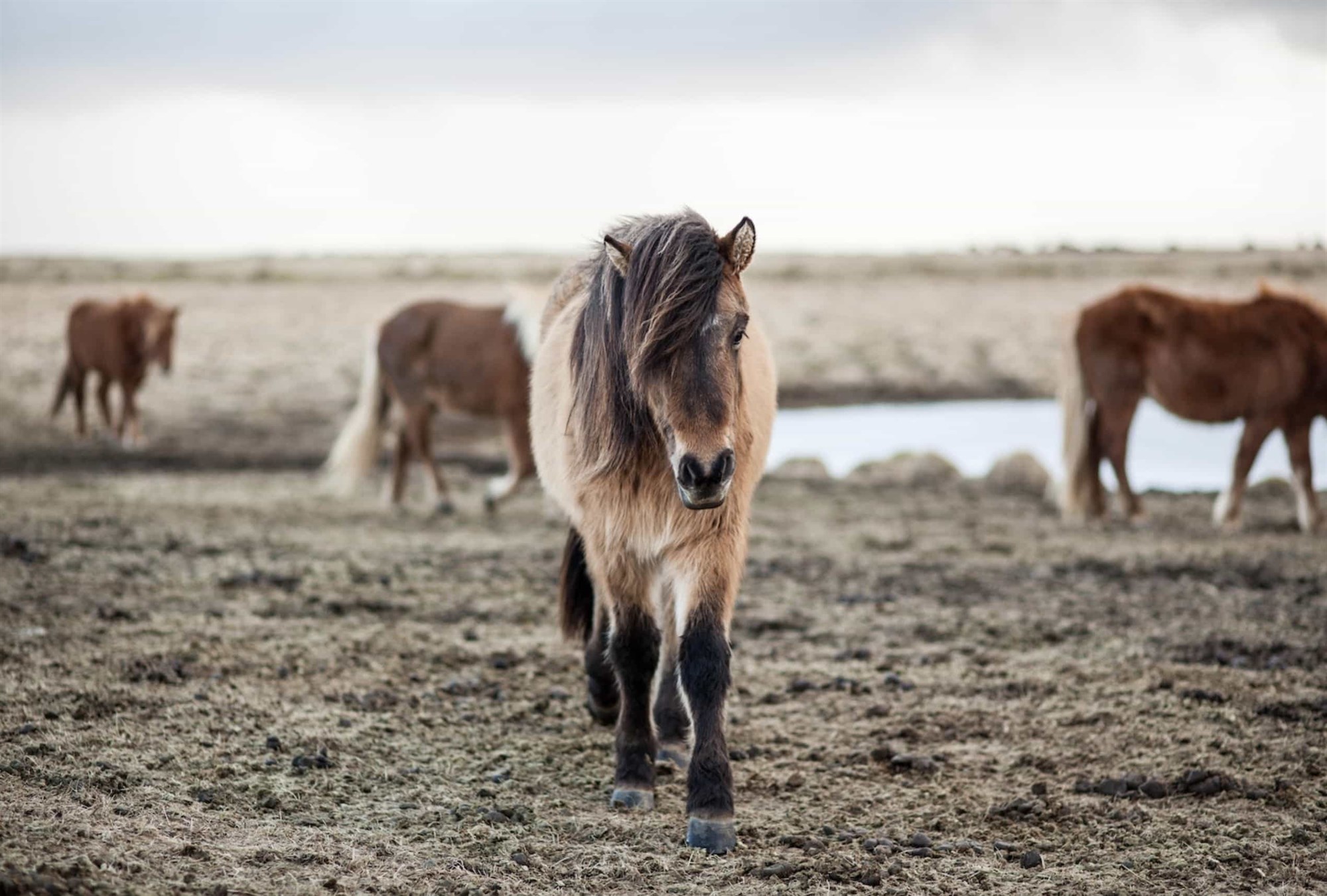
There’s the ones you’re familiar with, showcased proudly at riding shows: the gallop, the trot, and the walk. Some can canter, but not all. With Icelandic horses, you get the extras: the tölt and flying pace. The former is a natural, fluid, and smooth four-beat gait. It allows the rider to ride almost bounce-free. The flying pace is a high-speed gait used for short distances, which occurs naturally to the Icelandic horse. During this pace, both legs on one side of the horse touch the ground.
16) Icelanders Can Read 1000-Year-Old Texts
The naming conventions and language preservation mean that modern-day Icelandic still very much resembles ancient Norse. So, technically, Icelanders can read those 1000-year texts perfectly preserved even today and understand them.
17) WILD CAMPING IN ICELAND
Most off-road camping in Iceland is illegal. And given the country’s delicate biomes that would be under threat, this is a law that goes a long way in protecting the land for generations to come. Just make sure you know where designated camping areas in Iceland are before you set out on your trip. Use this interactive map to learn more about where you can camp in Iceland.
The same applies to driving off-road. You may be tempted to drive anywhere you can reach with your 4WD, but off-road driving is strictly illegal in Iceland for the same reasons stated above. The penalty can involve hefty fines and even imprisonment, so don’t risk it for a joyride.
18) PAVED ROADS IN ICELAND
Count it as just another one of those Iceland nuances or a real attempt to keep you safe — but you also can’t drive on any of the highland roads (also known as F-roads) without a 4WD. It’s not uncommon to see a perfectly paved highway road drift off into a vague, gravelly conception of a road, before dwindling down to a trail riddled with potholes. And it’s not that nobody cares — it’s just that Icelanders feel there’s no need to pave over paradise. However, even if you’re used to winter driving, vehicles with 4WD are required if you plan to take these off-the-beaten-path adventures.
19) THE NATIVES DRIVE MONSTER TRUCKS FOR A REASON
In Iceland, it’s always proceed with caution and at your own risk. But that doesn’t mean you can’t mitigate the risk with tires and traction meant to keep you firmly on the road. And there’s another caveat: When renting your 2WD or 4WD, you’ll likely see the natives driving monster trucks and jeeps.
If you see one of these in Reykjavík, feel free to roll your eyes, because the terrain just doesn’t call for it. But if you see one of these passing you on the inner roads, it’s because these guys are smart. They know Iceland’s roads are a thing of beauty — but are not to be trifled with.
20) DEMOCRACY LIVES IN A NATIONAL PARK
What is today known as Þingvellir National Park was, in 930 CE, where the first Parliament met in Iceland. It’s now a UNESCO World Heritage site, along with the two tectonic plates that also sit in the park, forming the Silfra fissure.
What is today known as Þingvellir National Park was, in 930 CE, where the first Parliament met in Iceland. It’s now a UNESCO World Heritage site, along with the two tectonic plates that also sit in the park, forming the Silfra fissure.
21) Working hours in Iceland are the longest in Europe!
If you’re complaining about your 40-hour work week, take solace in the fact that you don’t live in Iceland. Here, in the land of the Midnight Sun, the average workweek is 43.5 hours. That’s the most anyone has to work in Europe. Sure, when the sun never sets, it feels like all day is a party. But when the winter comes in, those long, dark days coupled with the longer work hours are likely to take a toll on your perception of a work-week.
CONCLUSION
There are definitely stranger things to be discovered in Iceland. This 21 fun facts are just the tip of the iceberg. Literally. If you’re looking to explore these distinctly Icelandic curiosities on your own terms, make sure to book ahead with Lotus Car Rentals.
Verify the country’s bizarre ways, test a few of these theories out, form your own opinions and, best of all, do it at your own pace. Lotus Car Rentals helps you travel with safety and comfort. Contact us to book a vehicle today!
